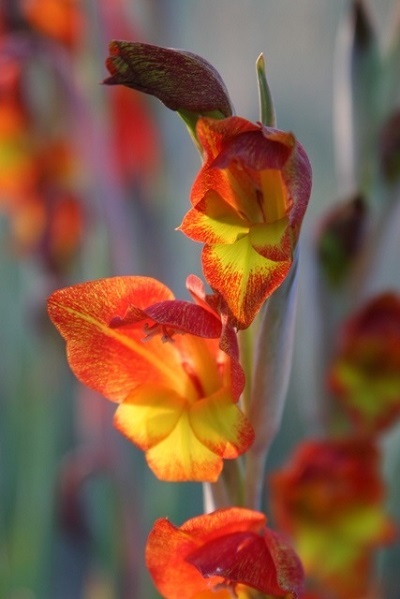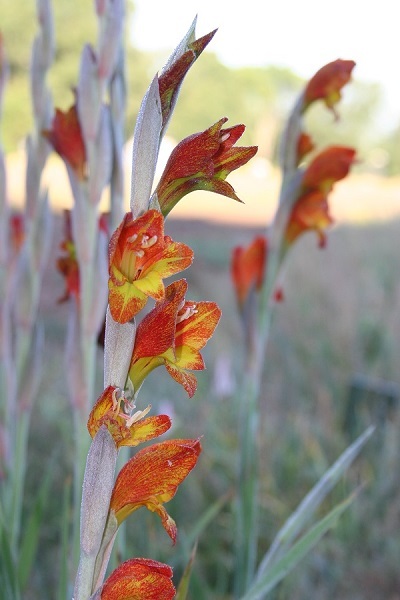Parrot Gladiolus - 1 - 4" pot
One of the rare heirloom gladiolus that I don't see a lot of is the parrot glad! After many years, we are starting to get some into production and we're thrilled to offer you 4" pots to get them started in your gardens! You will most likely NOT get a bloom this first year from a 4" pot, but plant the pot in a sunny spot, let the foliage die down, and prepare for next year's spring blooms!
Parrot gladiolus is a great choice for adding tropical flair to a summer garden, pairing well with other summer bloomers like salvia, rudbeckia, and cannas. It is native to South Africa (we often hear Port Natal made reference to, hence it's former botanical name Gladiolus natalensis) , known for its bold, bicolor flowers that often feature red, orange, and yellow hues with streaked or ruffled petals, resembling a parrot’s plumage and has been a parent to many modern hybrid gladiolus varieties. You may have also heard it referred to as the Natal Lily.

These are very low maintenance bulbs that multiply by producing cormels and by seed.
Blooms: These beautiful showy blooms have three upper petals forming the hood and three lower petals that reflex. They are most commonly orange or red with yellow accents. Up to 14 flowers may bloom on each spike.

Foliage: Each corm grows a 3-5ft spike, on which the blooms form, with stiff, veined leaves. The foliage will die down in early summer and appear the next spring.

Helpful Hints: If you want to cut them for your table make sure to leave at least four or five leaves to continue to collect nutrients to feed the corms.
We hope you enjoy these heirloom treasures in your garden!
One of the rare heirloom gladiolus that I don't see a lot of is the parrot glad! After many years, we are starting to get some into production and we're thrilled to offer you 4" pots to get them started in your gardens! You will most likely NOT get a bloom this first year from a 4" pot, but plant the pot in a sunny spot, let the foliage die down, and prepare for next year's spring blooms!
Parrot gladiolus is a great choice for adding tropical flair to a summer garden, pairing well with other summer bloomers like salvia, rudbeckia, and cannas. It is native to South Africa (we often hear Port Natal made reference to, hence it's former botanical name Gladiolus natalensis) , known for its bold, bicolor flowers that often feature red, orange, and yellow hues with streaked or ruffled petals, resembling a parrot’s plumage and has been a parent to many modern hybrid gladiolus varieties. You may have also heard it referred to as the Natal Lily.

These are very low maintenance bulbs that multiply by producing cormels and by seed.
Blooms: These beautiful showy blooms have three upper petals forming the hood and three lower petals that reflex. They are most commonly orange or red with yellow accents. Up to 14 flowers may bloom on each spike.

Foliage: Each corm grows a 3-5ft spike, on which the blooms form, with stiff, veined leaves. The foliage will die down in early summer and appear the next spring.

Helpful Hints: If you want to cut them for your table make sure to leave at least four or five leaves to continue to collect nutrients to feed the corms.
We hope you enjoy these heirloom treasures in your garden!




































